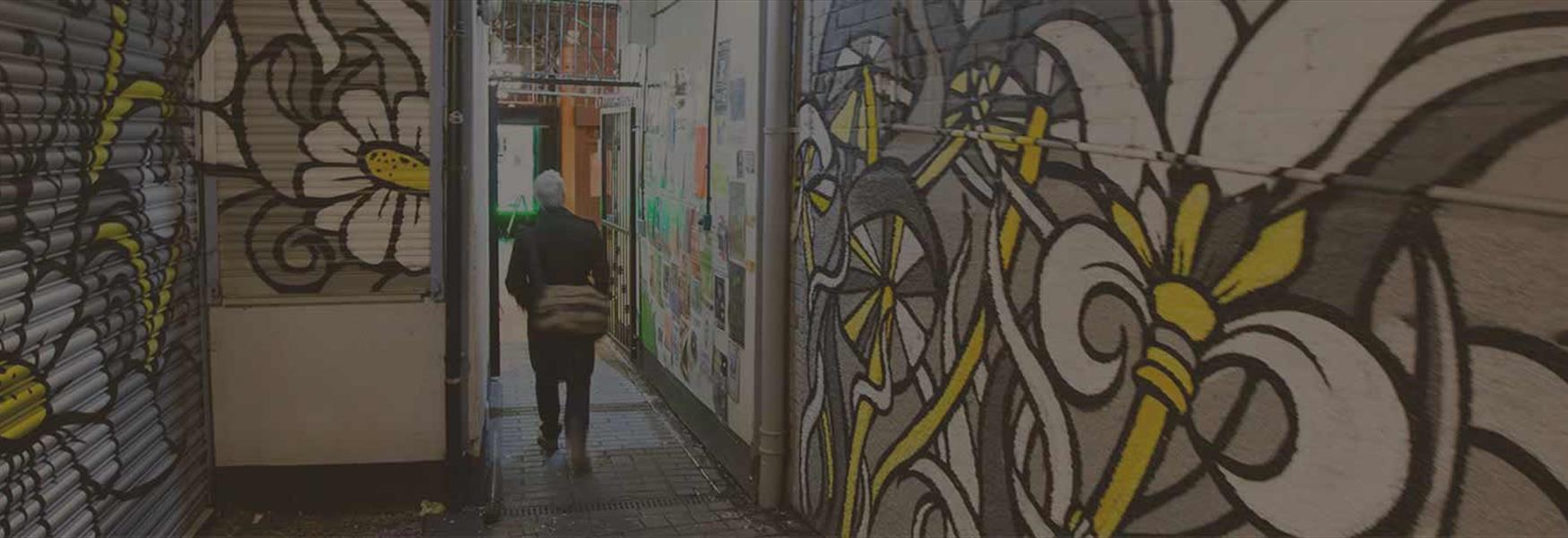If ever there was a place that has a story to tell, Nottinghamshire is it. Nottinghamshire’s stories by rebel authors and lovelorn poets have been intriguing visitors for many years. Including the legendary tales of Robin Hood and our famous Literary Heroes such as Lord Byron and D.H. Lawrence, we are one of the top UK destinations for literature lovers.
Today Nottingham is an international UNESCO City of Literature, recognising not only the astonishing impact these writers have made to the literary world, but also celebrating its appeal to visitors from across the globe.
Read on to discover more about Nottinghamshire's literary connections and plan your stay.
Literary Tours
Start with a visit to Lord Byron’s old digs - Newstead Abbey and its gardens and parklands. Built in the 12th century as a monastery, it later became the home of the Byron family including the 6th Lord Byron. Mad, bad and dangerous to know, the romantic poet is famous the world over as a passionate lover, a political revolutionary and a man who inspired the Greeks to victory over Turkish rule.
The grand Abbey subsequently passed through many hands and now houses a museum containing Byron memorabilia including many personal items. Pre-booked groups can enjoy a tour of the house with an eccentric costumed Lord Byron guide who will tell tales of Boatswain – Lord Byron’s dog, and also his wild parties that entertained the great and good of the 1800s.
Join their tours on Saturdays & Sundays at 3pm to hear some of the stories of the time he spent at Newstead Abbey. Please note that tours must be booked in advance and they take place periodically throughout the year.
Located in the heart of Nottingham city centre is Nottingham Castle. Built high upon Castle Rock towering above the city centre, the Castle was originally built in the 11th Century and was famously occupied by supporters of Prince John during the Crusades, the Sheriff of Nottingham and Robin Hood. Nowadays a Ducal Palace sits on the land where the castle once stood, containing a gallery, museum, Cave Tours, and the Robn Hood Adventures.
As well as featuring in may tales throughout the ages, the Castle features in Ian Fleming’s James Bond novel Thunderball, where it is described as an “extraordinary trademark of a doll’s house”.
Hidden away in the heart of Nottingham City Centre is a beautiful 200-year-old library. Founded in 1816, the library houses around 40,000 books and has many fine reading rooms spread over three floors of this Grade II listed Georgian Townhouse. The library was originally built for George Smith, the grandson of the founder of Smiths Bank, the oldest known provincial bank in the country.
Open to the public on selected days of the week and for a limited number of popular tours each year, the library also has a walled garden, is home to one of the last surviving Meridian Lines, and is believed to have been one of the first commercial photographic studios in the country.
The final stop of the day is in the nearby town of Eastwood where you can visit the authentically recreated miner’s cottage and birthplace of the world renowned and rebellious Nottinghamshire author, D.H. Lawrence.
Lawrence was born at 8a Victoria Street, the first of the family’s four Eastwood homes. Learn about life in the mining community which shaped Lawrence’s childhood and writing, see rooms where the family lived and view personal items and some of Lawrence’s original watercolour paintings.
Other Literary Attractions
St. Mary Magdalene Church
Lord Byron and his famous daughter Ada Lovelace (mathematician and writer known for her work on Charles Babbage’s early mechanical computer), are interred within the church in the Byron family vault. Visitors from around the world make pilgrimages to St. Mary Magdalene to see Byron's last resting place and learn about his life and works. Combine with a visit to Newstead Abbey to complete the story of Byron and enjoy a Grade II Listed Church of England parish church.
Wollaton Hall is a spectacular Grade I listed Elizabethan Mansion, built in the 1580s by Sir Francis Willoughby, standing on a natural hill, three miles west of Nottingham City Centre. Wollaton Hall is set in five hundred acres of spectacular gardens and parkland and was used as the setting for Wayne Manor in the 2012 Christopher Nolan Batman film, Dark Knight Rises. On site, in addition to the historic hall and its sumptuous grounds, visitors will find Nottingham's Natural History Museum, and Nottingham's Industrial Museum (open on Saturday, Sunday and some Bank Holidays).
Legendary home of Robin Hood and an awe-inspiring nature reserve of ancient oak trees. Once part of a royal hunting forest, Sherwood Forest National Nature Reserve covers 450 acres and incorporates some truly ancient areas of native woodland, where slender birch trees grow alongside more than one thousand veteran oaks, most of which are over 500 years old. Visit the famous Major Oak, which is known throughout the world for its connection to Nottinghamshire’s legendary hero Robin Hood. You can see the oak whenever the Sherwood Forest Visitor Centre is open.
Literary Places to Stay
Colwick Hall Hotel is a Georgian country house mansion set in over 60 acres of parkland and was once the ancestral home of Lord Byron before the family moved to nearby Newstead Abbey. Colwick Hall boasts 16 luxurious and individually designed bedrooms with views across either a lake or racecourse, and a fine dining restaurant; Byron's Brasserie. The bedrooms and suites at Colwick Hall Hotel have been sympathetically restored to their former glory.
Set in 26 acres of spectacular grounds, Eastwood Hall combines the beauty of a period property with every modern convenience. Located in the historic home town of D.H. Lawrence, it has 150 beautiful bedrooms to choose from, all of which are thoughtfully furnished to create a relaxing environment after a long day of work or exploration.
Stay in the Gardener’s Cottage at Newstead Abbey and you’ll be walking in the footsteps of the Romantic poet Lord Byron and enjoying the same stunning park vistas and surrounding countryside that truly inspired him.
Built in the 1860s by the Webb family, Gardener’s Cottage is situated in heart of the Abbey grounds and is just a few minutes’ walk from many of the parks’ unique features, including the Abbey and Byron’s own Fort.
Literary Itineraries
Read our literary itinerary for ideas and inspiration when planning your trip to Nottingham and Nottinghamshire. Click here to read more.
Nottingham is known as the home of Lord Byron who is one of the most famous romantic poets in the UK. Explore his impact and legacy in Nottinghamshire with this two day itinerary. Click here to read more.



